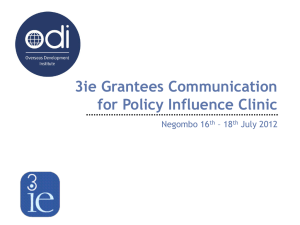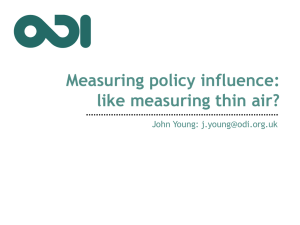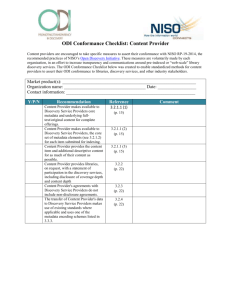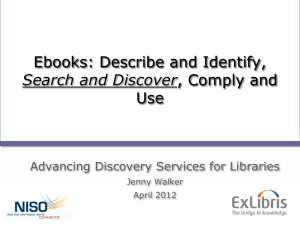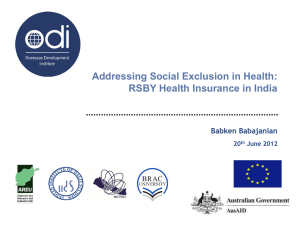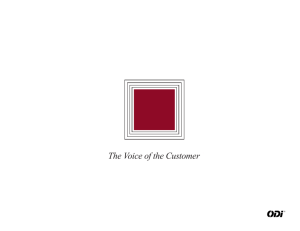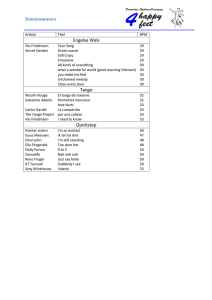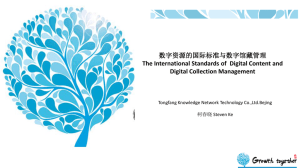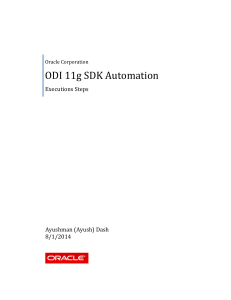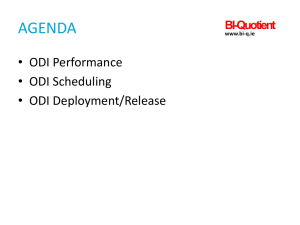Spine Tango: Data Collection in the Spinal Unit at QMC
advertisement
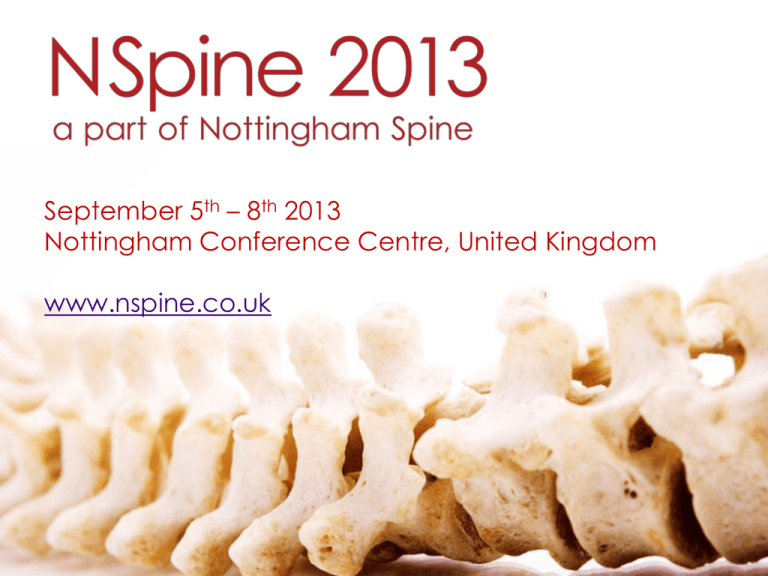
September 5th – 8th 2013 Nottingham Conference Centre, United Kingdom www.nspine.co.uk History Unique data collection system University of Berne and Eurospine 2002 30,000 interventions in 29 centres 2009 Spine Tango Conservative Comparative data Benchmarking Osteopaths at QMC are the first internationally to record and input data Spine Tango Conservative Questionnaires Examiner Questionnaire Course of Tx Assessment End of Tx Therapy Purpose of Spine Tango Records diagnostic findings and functional limitations (using ICD and ICF classifications) Functional limitations become the goals for treatment and form core outcome measures Data extraction can be very specific Which spine conditions and pathologies are most effectively managed, and When intervention is most effective, based on changes in functional limitations Benefits to Patients, NHS & Osteopathy Identifies spine pathologies and conditions that are most effectively managed. Most effective point of intervention. Optimum treatment duration. Training aid for colleagues. Treatment complications. Overlay ODI and NDI to enhance data. Comparison against pool i.e. Benchmarking. Potentially reducing surgical conversion rate. Initial data promising. Spine Tango Conservative Questionnaires Patient Questionnaires COMI Low Back COMI Neck ODI NDI EQ-5D Time Scales Greater numbers = valid and powerful results Currently n~80 new patients per annum At least 4-5 years for n=320-400 On-going study Encourage others to become involved Continue to develop document with Bern Validation study with New York University Sample Data – Change in ODI Scores Pre to Post Treatment ODI Change 70 60 ODI % 50 40 30 20 10 0 a b c d e P a t i e nt Pre1stTx End2ndTx f g Sample Data – Diagnostic Classification Sample Data – Pre Treatment Grade Classification Grade 0 = No symptoms Grade I = Symptoms, but no care recommended Grade II = Symptoms, no radicular signs, treatment recommended Grade III = Symptoms, radicular signs, treatment recommended Grade IV = Red Flags Sample Data – Post Treatment Grade Classification Grade 0 = No symptoms Grade I = Symptoms, but no care recommended Grade II = Symptoms, no radicular signs, treatment recommended Grade III = Symptoms, radicular signs, treatment recommended Grade IV = Red Flags Sample Data – Pre Treatment History Sample Data – Pre Treatment Functional Classifications Department Background Osteopathy has been available as a service in the spinal unit since 1999. Currently has 2 consultant spinal osteopaths & 2 osteopathic fellows. Data collection since January 2012: Spine Tango Conservative, ODI & NDI. Validation of Spine Tango Conservative by NYU. 2012/2013 patient numbers: New patient appointments Follow up appointments 86 1012 Data Collection Every patient completes/has data recorded on: Spine Tango ODI/NDI COMI Low Back/COMI neck EQ-5D - a standardised instrument for use as a measure of health outcome, it provides a simple descriptive profile and a single index value for health status. Each form is completed at initial assessment, therapy midpoint and at the end of the treatment cycle. Data is inputted manually into a central database & analysed. Functional Limitations Data Subjective record of functional limitations pre- and post-treatment. Objective: setting goals to overcome functional limitations with treatment. Goals at end of treatment may be fully achieved, partially achieved or not achieved. Latest Functional Limitation Data Goal Achieved Goal Partially Achieved Goal Not Achieved 18% 43% 39% n = 31 ODI Data ODI questionnaires are scored out of 100. A change of ≥ 10 pre- post treatment is considered statistically significant – MCID. Latest ODI data for all spinal pathologies: Range Pre-Tx scores Range Post-Tx scores 78-16 66-6 Mean Pre-Tx score 41 Mean Post-Tx score Mean change 26.8 -15.8 – statistically significant 59% of patients had a statistically significant reduction in their ODI score following osteopathic treatment. Latest ODI Data for all pathologies ODI Pre Tx ODI Post Tx 100 n = 22 90 80 ODI score 70 60 50 40 30 20 10 0 A B C D E F G H I J K L M N O P Q R S T U V Latest ODI Data for Degenerative Disc Disease in Lumbosacral Region Pre Tx Post Tx 100.0 n=10 90.0 80.0 ODI Score 70.0 60.0 50.0 40.0 30.0 20.0 10.0 0.0 A B C D E F G H I J Medication Data Start of treatment: pain medication taken specifically for spinal condition is recorded. End of treatment cycle: same medication is recorded as ‘discontinued’, ‘continued’ or ‘modified’. 43% of patients had discontinued pain medication relating to their spinal complaint by the end of treatment. Benefit of Data Robust data collection system ensures reliability of data. Validation of Spine Tango Conservative is expected by November 2013 – this will ensure valid research is universally recognised. Data will identify where & when osteopathic intervention is most effective, & how treatment cycles can be optimised. Data will highlight areas in the referral pathway that are optimal or where there is a need for improvement.
